Oct 19, 2017
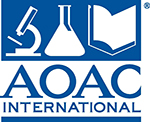 Brooks Applied Labs’ scientists, Ben Wozniak and Russell Gerads, recently presented at the AOAC Annual Meeting and Northwest Remediation Conference, respectively. The focus of their presentations was on arsenic chemistry in consumptive products and in the environment. Their presentations are now available for download:
Brooks Applied Labs’ scientists, Ben Wozniak and Russell Gerads, recently presented at the AOAC Annual Meeting and Northwest Remediation Conference, respectively. The focus of their presentations was on arsenic chemistry in consumptive products and in the environment. Their presentations are now available for download:
 As scientists, we understand the relationship between contaminants in the environment and our food. However, without understanding not just the chemistry of arsenic, but also how it is mobilized in the environment and metabolized by organisms, the road to generating quantitative results can be perilous. These recent presentations by BAL scientists are another testament to our approach to ethics in business and our desire to foster scientific growth in fields that directly impact the world around us. Partnering with BAL goes beyond selecting a laboratory, as we are most often perceived as a valuable teammate called upon to solve the most challenging problems. Feel free to contact one of our representatives to find out how we can help you.
As scientists, we understand the relationship between contaminants in the environment and our food. However, without understanding not just the chemistry of arsenic, but also how it is mobilized in the environment and metabolized by organisms, the road to generating quantitative results can be perilous. These recent presentations by BAL scientists are another testament to our approach to ethics in business and our desire to foster scientific growth in fields that directly impact the world around us. Partnering with BAL goes beyond selecting a laboratory, as we are most often perceived as a valuable teammate called upon to solve the most challenging problems. Feel free to contact one of our representatives to find out how we can help you.
Oct 19, 2017
 The International Water Conference (IWC) is the world’s premier conference for understanding and dealing with the technical and business challenges of industrial water treatment, presenting the latest in scientific advances and practical applications at its 5-day conference held in Orlando November 12-16, 2017. On November 13th, BAL’s Jamie Fox will be moderating the discussion portion of the session Advances in On-Line Monitoring Methods for Boiler Water and FGD Wastewater. BAL has extensive experience and expertise in resolving complex wastewater interferences to ensure accurate quantification and speciation of trace metals in this matrix. To learn more, visit our Industrial Wastewater page on our website.
The International Water Conference (IWC) is the world’s premier conference for understanding and dealing with the technical and business challenges of industrial water treatment, presenting the latest in scientific advances and practical applications at its 5-day conference held in Orlando November 12-16, 2017. On November 13th, BAL’s Jamie Fox will be moderating the discussion portion of the session Advances in On-Line Monitoring Methods for Boiler Water and FGD Wastewater. BAL has extensive experience and expertise in resolving complex wastewater interferences to ensure accurate quantification and speciation of trace metals in this matrix. To learn more, visit our Industrial Wastewater page on our website.
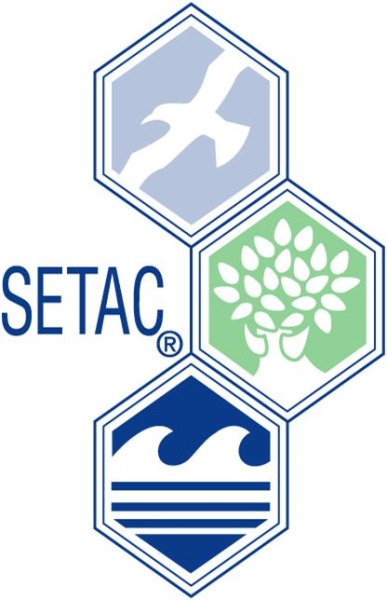 The theme of this year’s SETAC North America Annual Meeting, Toward a Superior Future: Advancing Science for a Sustainable Environment, aligns well with BAL’s vision statement. Following our tradition of presenting good science at national and international conferences, BAL staff will be presenting two posters at this conference held November 12-16 in Minneapolis: Elizabeth Madonick will present Arsenic Speciation in Soils and Sediments: How Data Quality Objectives Determine Most Appropriate Method Selection, and Brian Smith will present Method Comparison for Bioaccessible Lead and Arsenic in Soils. Contact us any time after November 13th if you would like to receive a PDF copy of these posters.
The theme of this year’s SETAC North America Annual Meeting, Toward a Superior Future: Advancing Science for a Sustainable Environment, aligns well with BAL’s vision statement. Following our tradition of presenting good science at national and international conferences, BAL staff will be presenting two posters at this conference held November 12-16 in Minneapolis: Elizabeth Madonick will present Arsenic Speciation in Soils and Sediments: How Data Quality Objectives Determine Most Appropriate Method Selection, and Brian Smith will present Method Comparison for Bioaccessible Lead and Arsenic in Soils. Contact us any time after November 13th if you would like to receive a PDF copy of these posters.
Sep 14, 2017
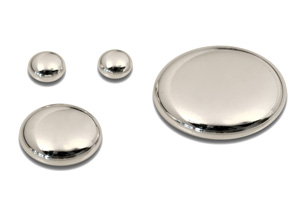 Brooks Applied Labs (BAL) currently offers mercury (Hg) stable isotope ratio testing for environmental forensic studies. Mercury has a unique isotopic pattern and small differences in the ratios of these isotopes can help in identification of the source, transport, and biogeochemical fate of mercury in atmospheric bulk deposition, soil, freshwater, and seawater matrices.
Brooks Applied Labs (BAL) currently offers mercury (Hg) stable isotope ratio testing for environmental forensic studies. Mercury has a unique isotopic pattern and small differences in the ratios of these isotopes can help in identification of the source, transport, and biogeochemical fate of mercury in atmospheric bulk deposition, soil, freshwater, and seawater matrices.
Typically, accurate stable metal isotope measurement is achieved by thermal ionization mass spectrometry which can usually only be found in academic research environments. BAL utilizes a cold vapor generation system coupled to an inductively coupled plasma mass spectrometer equipped with a Dynamic Reaction Cell (DRC) to achieve similar results with appropriate QA/QC. This specific instrument not only removes interferences for low-level mercury analysis in various matrices, but it also allows extremely accurate and precise determination of isotopic ratios limited with counting statistics (< 0.1% most ratios). To ensure negligible spectral interferences are present for any of the measured mercury isotopes, interfering elements, such as tungsten, are monitored. The DRC technology facilitates collisional damping of the ion beam fluctuations, which greatly reduces the internal variability and increases precision. The confidence in isotopic ratio testing is also typically limited by sample concentration and matrix interferences. By identifying these interferences and implementation of preconcentration techniques and appropriate sample preparation methods, the applicability of mercury isotopic ratio testing for most matrices is now a reality. In addition, institution of proper sampling plans is a necessity to ensure all localized variables are identified to account for as many variables as possible.
Use of mercury stable isotope ratio testing can often decrease the scope of work for investigative projects, ultimately reducing the cost of the investigation and increasing the confidence in results due to the absolute nature of the testing procedure. This is especially important when dealing with tort and environmental forensic litigation cases.
The mercury isotopic ratio testing available at BAL is a shining example of our commitment to offering advanced technologies to support the scientific needs of our clients. Our suite of proprietary and regulatory compliant methods allows us to choose the right analytical tool for the job.
For project inquiries, applicability of methodologies, and pricing information, feel free to contact us.
Sep 14, 2017
Conference season has kicked back into high gear and the BAL road warriors are dusting off their suitcases! As you can see by the list of conferences, BAL is much more than an environmental laboratory – from power plants to Department of Energy (DOE) to pharmaceuticals to food, our lab provides customized analytical services to a wide array of industries, while staying hyper-focused on what we know best…Meaningful Metals Data and Advanced Speciation Solutions!
 Kicking off the travel this month, Russ Gerads has been invited to travel to Chattanooga on September 12 to share his knowledge and expertise on power plant chemistry, particularly as it relates to the hot-button topic of selenium treatment in wastewater. This meeting is hosted and sponsored by ADA-ES.
Kicking off the travel this month, Russ Gerads has been invited to travel to Chattanooga on September 12 to share his knowledge and expertise on power plant chemistry, particularly as it relates to the hot-button topic of selenium treatment in wastewater. This meeting is hosted and sponsored by ADA-ES.
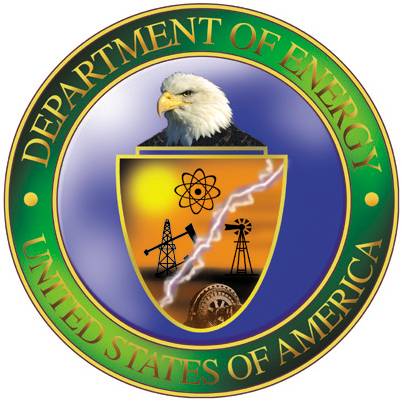 For the third year in a row, Jamie Fox, will be attending the DOE’s Analytical Services Program Workshop on September 13 – 14 in Las Vegas. The workshop provides opportunities to share best management practices and lessons learned from across the DOE complex.
For the third year in a row, Jamie Fox, will be attending the DOE’s Analytical Services Program Workshop on September 13 – 14 in Las Vegas. The workshop provides opportunities to share best management practices and lessons learned from across the DOE complex.
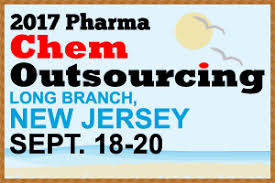 Jamie then hops off one plane on to another to head to New Jersey and attend Pharma ChemOutsourcing in Long Branch from September 18 – 20. This meeting provides the opportunity to network, learn, and discuss issues affecting the industry, including elemental testing in drug products and materials that are part of the manufacturing process. Learn more on our Pharmaceuticals webpage.
Jamie then hops off one plane on to another to head to New Jersey and attend Pharma ChemOutsourcing in Long Branch from September 18 – 20. This meeting provides the opportunity to network, learn, and discuss issues affecting the industry, including elemental testing in drug products and materials that are part of the manufacturing process. Learn more on our Pharmaceuticals webpage.
 Next up, Ben Wozniak will be headed to Atlanta to present at the AOAC’s Annual Meeting from September 24 – 27. The conference brings together the top food chemistry expert in the world! The title of Ben’s presentation will be “Intercomparison of extraction and analytical techniques for inorganic arsenic in seaweed.”
Next up, Ben Wozniak will be headed to Atlanta to present at the AOAC’s Annual Meeting from September 24 – 27. The conference brings together the top food chemistry expert in the world! The title of Ben’s presentation will be “Intercomparison of extraction and analytical techniques for inorganic arsenic in seaweed.”
 Lastly, Michelle Briscoe and Annie Carter will attend the American Council of Independent Laboratories (ACIL) Annual Meeting in Portland October 2-5. This year’s conference promises to present an inspiring program where our company’s leaders will have opportunities to experience topnotch educational and leadership seminars to enhance our business practices and laboratory operations.
Lastly, Michelle Briscoe and Annie Carter will attend the American Council of Independent Laboratories (ACIL) Annual Meeting in Portland October 2-5. This year’s conference promises to present an inspiring program where our company’s leaders will have opportunities to experience topnotch educational and leadership seminars to enhance our business practices and laboratory operations.
Aug 3, 2017

Brooks Applied Labs has developed a proprietary method for characterizing the molecular forms of selenium in soil, sediment, industrial byproducts, and biosolids. The technology we have generated allows our clients to ascertain the fate and transport of selenium in the solid phase environment as well as to identify the efficacy of treatment systems. The molecular form of selenium will dictate the toxicity, mobility through a solid substrate, treatability, bioavailability, and bioaccessibility. Our method currently supports discrete quantitation of selenite, selenate, selenocyanate, and methylseleninic acid, as well as fractionation of reduced selenium complexes (e.g., Cd-Se, Hg-Se, and Pb-Se), elemental selenium, and non-extractable selenium compounds.
Traditionally, characterization of metals and metalloid compounds in solid substrates has been limited to generic selective sequential extraction approaches (SSE), scanning electron microscopy energy dispersive spectrometry (SEM-EDS), or synchrotron based approaches (XAFS and XANES). These analytical approaches have limitations that increase the probability of generating inaccurate data, data of limited use necessitating gross assumptions, or misidentification of molecules.
The information generated from our customized selective sequential extraction (SSE) approach is presented in the table below. Unlike most SSE approaches, the first two fractions allow for speciation analyses via ion chromatography inductively coupled plasma mass spectrometry (IC-ICP-MS) for discrete molecular identification and quantification. Fractions 3 and 4 target insoluble selenium species which have specific reactivity in accordance with the chemical bonds. The final fraction allows for mass balance in comparison to the total selenium concentration.
| Fraction |
Description of Target Selenium Species |
| Fraction 1 |
Highly mobile ions (SeO4-2, MeSe(IV), SeCN) |
| Fraction 2 |
Adsorbed ions (SeO4-2, SeO3-2, SeCN, MeSe(IV)) |
| Fraction 3 |
S2Se, Se0 (amorphous and crystalline) |
| Fraction 4 |
Selenides (HgSe, PbSe, CdSe, ZnSe) |
| Fraction 5 |
Non-extractable Selenium |
Our proprietary method has been applied worldwide for over a decade to support selenium concerns. Our partners (clients) have been able to address problems with quantitative results instead of computer models and theories. At Brooks Applied Labs we continue to strive to generate novel preparatory and analytical approaches that meet or exceed the needs of the marketplace and the scientific community.
Aug 3, 2017
International Mercury Conference
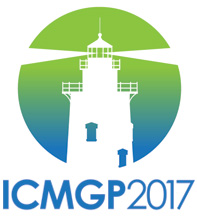 Last month, VP of Operations, Annie Carter, along with our Mercury Group Leader, David Westby, presented a poster at the International Conference on Mercury as a Global Pollutant (ICMGP) in Providence, RI. The title of the poster they presented is “An Alternative Analytical Technique for Mercury Speciation in Radioactive Tank Waste at the Savannah River Site” and it discussed novel techniques developed just for this unique matrix to compare measurements made by traditional methods to more selective and modern analytical approaches. Contact Us if you would like to learn more!
Last month, VP of Operations, Annie Carter, along with our Mercury Group Leader, David Westby, presented a poster at the International Conference on Mercury as a Global Pollutant (ICMGP) in Providence, RI. The title of the poster they presented is “An Alternative Analytical Technique for Mercury Speciation in Radioactive Tank Waste at the Savannah River Site” and it discussed novel techniques developed just for this unique matrix to compare measurements made by traditional methods to more selective and modern analytical approaches. Contact Us if you would like to learn more!
National Environmental Monitoring Conference (NEMC)
 VP of Quality, Frank McFarland, will be chairing a session at NEMC in Washington, DC, which is taking place August 7 – 11. The title of the session is “Metals and Metals Speciation Analysis in Environmental Samples.” We know that all you fellow attendees will be sticking it out with Frank on the last morning of the conference and encourage you to stop by and say hello! It’s worth mentioning this session has been chaired by Brooks Applied Labs all but two years since 2010, and is naturally near and dear to our hearts to promote and advance good science surrounding metals analysis. Please support it with us!
VP of Quality, Frank McFarland, will be chairing a session at NEMC in Washington, DC, which is taking place August 7 – 11. The title of the session is “Metals and Metals Speciation Analysis in Environmental Samples.” We know that all you fellow attendees will be sticking it out with Frank on the last morning of the conference and encourage you to stop by and say hello! It’s worth mentioning this session has been chaired by Brooks Applied Labs all but two years since 2010, and is naturally near and dear to our hearts to promote and advance good science surrounding metals analysis. Please support it with us!
Aug 3, 2017
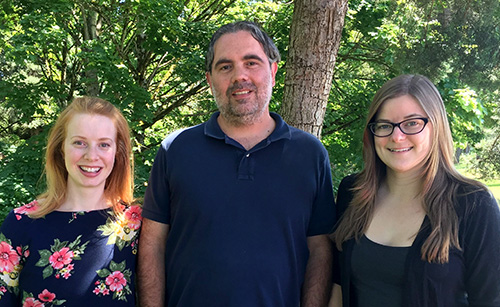 Brooks Applied Labs had three employees recently celebrate their 5-year anniversary with the company. Project Coordinator Jacki Aitken, Project Manager Jeremy Maute, and Quality Assurance Associate Coila Craig. BAL strives to maintain high levels of employee satisfaction and retention through consistent adherence to our Core Values, and we are grateful to these wonderful employees for their years of dedication and outstanding performance at our company. Congratulations Jacki, Jeremy, and Coila – and thank you so much for all that you do to make our company great!
Brooks Applied Labs had three employees recently celebrate their 5-year anniversary with the company. Project Coordinator Jacki Aitken, Project Manager Jeremy Maute, and Quality Assurance Associate Coila Craig. BAL strives to maintain high levels of employee satisfaction and retention through consistent adherence to our Core Values, and we are grateful to these wonderful employees for their years of dedication and outstanding performance at our company. Congratulations Jacki, Jeremy, and Coila – and thank you so much for all that you do to make our company great!
Jul 13, 2017

We hope you enjoyed your 4
th of July! While watching those vivid colors explode against the dark sky, have you ever thought about what fireworks are made of? Many of the bright colors that make fireworks so exciting are actually derived from metals. For example,
Paris Green has a picturesque name and provides fireworks with a vibrant blue-green hue; however, it is really copper acetoarsenite, a toxic chemical. By
law in the US, “fireworks must not contain arsenic sulfide, arsenate, and arsenite”. Generally, fireworks with more than 100 ppm of total arsenic (As) may be flagged for a sales ban in the US.
Brooks Applied Labs tests a wide variety of sample types! When we recently tested fireworks for As using the state-of-art Agilent 8800 ICP-QQQ-MS, we were able to show that historical results from another laboratory using older ICP-OES technology significantly over-estimated the As concentrations.
Contact us for any type of specialty metals testing you might need!
Jul 13, 2017
 While the standard technique for detecting hexavalent chromium, or Cr(VI), has improved over the years with the addition of ion chromatography (IC) coupled to UV/visible spectrophotometry, the EPA published methods still rely upon reaction-based chemistry which are prone to interferences and varying reaction kinetics in complex matrices. Any experienced analytical chemist will tell you that direct measurement of a contaminant is always preferable to relying upon the reaction of the target analyte with another chemical for accurate quantitation. Since there is no EPA method that utilizes direct measurement for Cr(VI), most environmental professionals believe that UV-Vis is the best the labs can do, however this is simply not true.
While the standard technique for detecting hexavalent chromium, or Cr(VI), has improved over the years with the addition of ion chromatography (IC) coupled to UV/visible spectrophotometry, the EPA published methods still rely upon reaction-based chemistry which are prone to interferences and varying reaction kinetics in complex matrices. Any experienced analytical chemist will tell you that direct measurement of a contaminant is always preferable to relying upon the reaction of the target analyte with another chemical for accurate quantitation. Since there is no EPA method that utilizes direct measurement for Cr(VI), most environmental professionals believe that UV-Vis is the best the labs can do, however this is simply not true.
For decades, Cr(VI) has been classified as a carcinogen when inhaled as dust or particulate, making it a problematic worker safety hazard potentially affecting over 500,000 individuals per year. Because of its extensive use in dyes, wood preservatives, anti-corrosion products, and formation during electroplating, it is not hard to find incidences of contamination in the natural environment as well. The ability to detect hexavalent chromium at trace levels and free from common interferences like organic acids, molybdenum, iron, and other elements, is crucial to the success of the project.
By coupling IC to ICP-MS, the most widely accepted technique for accurate measurement of trace metals in complex matrices, not only can BAL achieve a direct measurement of Cr(VI) and separate out interferences, the achievable detection limits are in many cases two orders of magnitude lower than the most recent published EPA methodology. By virtually eliminating potential bias in the data, BAL’s method for measuring Cr(VI) ensures that remedial investigations and determinations of monitoring exceedances are based upon the best available science and superior data quality. Contact us today to learn more or to get a customized list of our current MDL/MRL’s for your project.
Jul 13, 2017
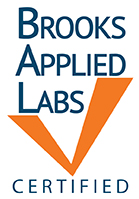 Accurate data is essential for effective decision-making. Whether evaluating if food or water is safe for consumption, a site requires environmental cleanup, an industrial wastewater meets a discharge requirement, or a pharmaceutical ingredient is of sufficient purity, high quality representative data must be collected to ensure that appropriate decisions are made and costly mistakes are avoided.
Accurate data is essential for effective decision-making. Whether evaluating if food or water is safe for consumption, a site requires environmental cleanup, an industrial wastewater meets a discharge requirement, or a pharmaceutical ingredient is of sufficient purity, high quality representative data must be collected to ensure that appropriate decisions are made and costly mistakes are avoided.
While applying an appropriate analytical method to samples is necessary for generating accurate results, by itself it is not sufficient. Collecting and storing samples appropriately, in a manner to prevent inadvertent contamination, is just as essential. After all, even state-of-the-art analytical techniques cannot correct for random biases introduced during sample collection. Brooks Applied Labs (BAL) has extensive experience consulting with clients on proper sample collection techniques for trace metals and offering ultra-clean, pre-tested sampling equipment to support your project needs.
Avoiding common sources of contamination is an important first step when sampling. BAL’s experienced staff can provide guidance on which types of equipment to use and which to avoid. Certain materials have a higher risk of being contaminated with the analytes of interest (e.g., metals in colored plastics or in many types of glass) and, therefore, should be avoided when possible.
Verifying that the equipment used for sample collection and storage are fit-for-purpose is just as critical. BAL can ensure that your equipment meets your data quality objectives by cleaning it in our Equipment Decontamination Clean Room. This portion of our laboratory is fed by HEPA-filtered air and contains large vats of nitric and hydrochloric acids that are used for cleaning a variety of supplies, including sample containers, carboys, tubing, filters, and bailers. You name it, we most likely can clean it!
Our rigorous cleaning processes involve soaking items in acid for several days, followed by testing to demonstrate they are certified clean down to BAL’s ultra-low reporting limits. Upon request, BAL can even provide Certificates of Analysis to document that supplies are clean for trace metals use. Because these processes can take days to weeks to complete, depending on the number and type of supplies required, we strongly recommend contacting us early in your project setup. Whatever industry you work for or with, Brooks Applied Labs can help your project start with success!
 Brooks Applied Labs’ scientists, Ben Wozniak and Russell Gerads, recently presented at the AOAC Annual Meeting and Northwest Remediation Conference, respectively. The focus of their presentations was on arsenic chemistry in consumptive products and in the environment. Their presentations are now available for download:
Brooks Applied Labs’ scientists, Ben Wozniak and Russell Gerads, recently presented at the AOAC Annual Meeting and Northwest Remediation Conference, respectively. The focus of their presentations was on arsenic chemistry in consumptive products and in the environment. Their presentations are now available for download:![]() As scientists, we understand the relationship between contaminants in the environment and our food. However, without understanding not just the chemistry of arsenic, but also how it is mobilized in the environment and metabolized by organisms, the road to generating quantitative results can be perilous. These recent presentations by BAL scientists are another testament to our approach to ethics in business and our desire to foster scientific growth in fields that directly impact the world around us. Partnering with BAL goes beyond selecting a laboratory, as we are most often perceived as a valuable teammate called upon to solve the most challenging problems. Feel free to contact one of our representatives to find out how we can help you.
As scientists, we understand the relationship between contaminants in the environment and our food. However, without understanding not just the chemistry of arsenic, but also how it is mobilized in the environment and metabolized by organisms, the road to generating quantitative results can be perilous. These recent presentations by BAL scientists are another testament to our approach to ethics in business and our desire to foster scientific growth in fields that directly impact the world around us. Partnering with BAL goes beyond selecting a laboratory, as we are most often perceived as a valuable teammate called upon to solve the most challenging problems. Feel free to contact one of our representatives to find out how we can help you.


 Brooks Applied Labs (BAL) currently offers mercury (Hg) stable isotope ratio testing for environmental forensic studies. Mercury has a unique isotopic pattern and small differences in the ratios of these isotopes can help in identification of the source, transport, and biogeochemical fate of mercury in atmospheric bulk deposition, soil, freshwater, and seawater matrices.
Brooks Applied Labs (BAL) currently offers mercury (Hg) stable isotope ratio testing for environmental forensic studies. Mercury has a unique isotopic pattern and small differences in the ratios of these isotopes can help in identification of the source, transport, and biogeochemical fate of mercury in atmospheric bulk deposition, soil, freshwater, and seawater matrices.




 Brooks Applied Labs had three employees recently celebrate their 5-year anniversary with the company. Project Coordinator Jacki Aitken, Project Manager
Brooks Applied Labs had three employees recently celebrate their 5-year anniversary with the company. Project Coordinator Jacki Aitken, Project Manager  We hope you enjoyed your 4th of July! While watching those vivid colors explode against the dark sky, have you ever thought about what fireworks are made of? Many of the bright colors that make fireworks so exciting are actually derived from metals. For example,
We hope you enjoyed your 4th of July! While watching those vivid colors explode against the dark sky, have you ever thought about what fireworks are made of? Many of the bright colors that make fireworks so exciting are actually derived from metals. For example,  While the standard technique for detecting hexavalent chromium, or Cr(VI), has improved over the years with the addition of ion chromatography (IC) coupled to UV/visible spectrophotometry, the EPA published methods still rely upon reaction-based chemistry which are
While the standard technique for detecting hexavalent chromium, or Cr(VI), has improved over the years with the addition of ion chromatography (IC) coupled to UV/visible spectrophotometry, the EPA published methods still rely upon reaction-based chemistry which are  Accurate data is essential for effective decision-making. Whether evaluating if food or water is safe for consumption, a site requires environmental cleanup, an industrial wastewater meets a discharge requirement, or a pharmaceutical ingredient is of sufficient purity, high quality representative data must be collected to ensure that appropriate decisions are made and costly mistakes are avoided.
Accurate data is essential for effective decision-making. Whether evaluating if food or water is safe for consumption, a site requires environmental cleanup, an industrial wastewater meets a discharge requirement, or a pharmaceutical ingredient is of sufficient purity, high quality representative data must be collected to ensure that appropriate decisions are made and costly mistakes are avoided.